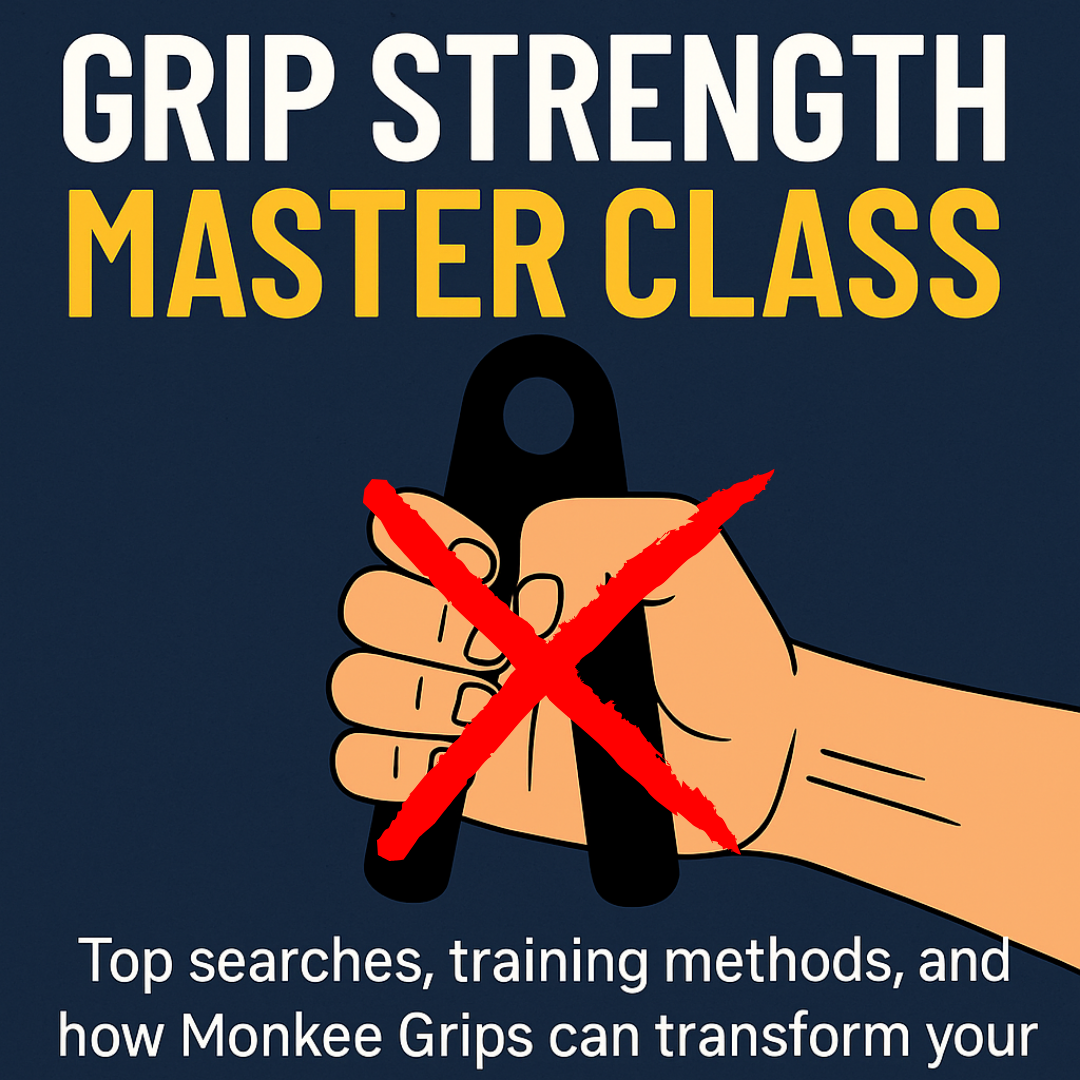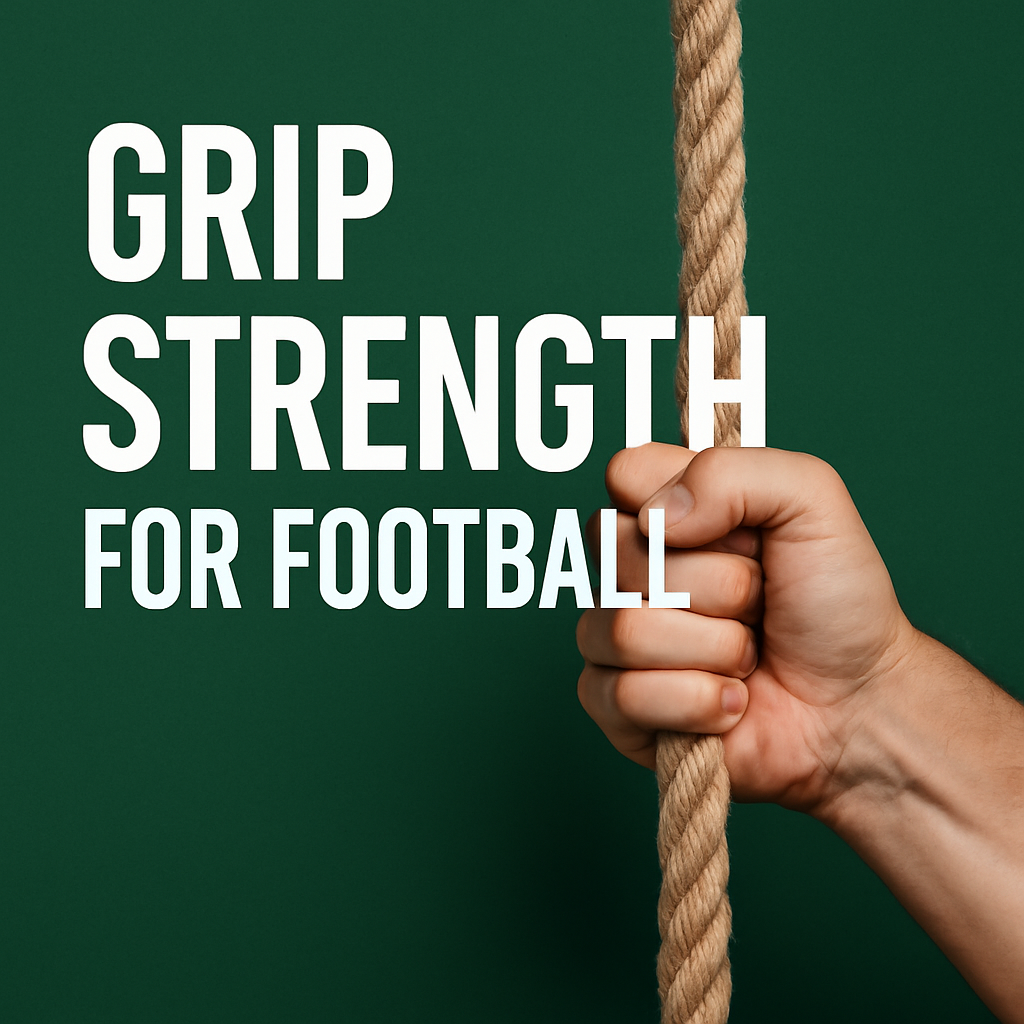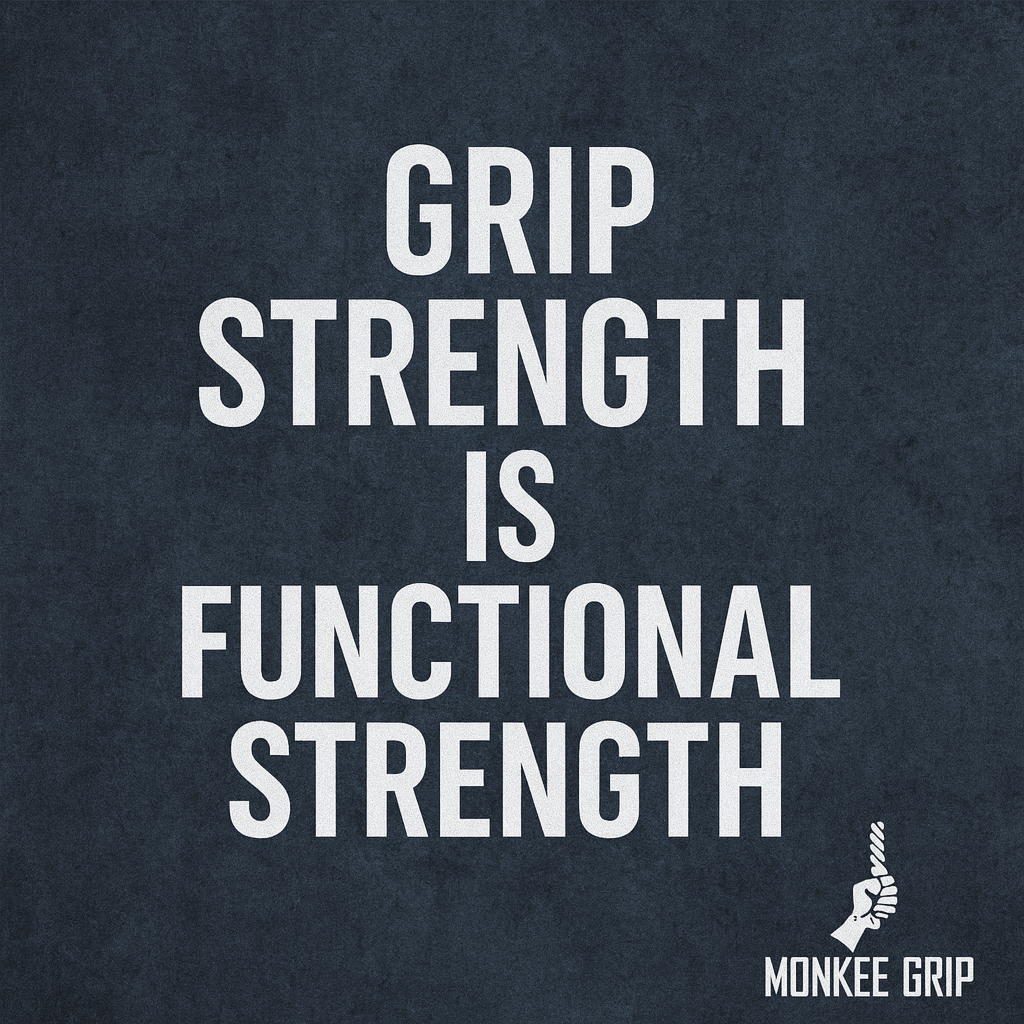Grip Strength: Why It Matters and How to Build It
Search engines are buzzing about grip strength. People all over the world are asking questions like "Why is grip strength important?", "What does my grip strength say about my health?", and "How can I make my grip stronger?" These questions aren’t just for bodybuilders or climbers—your hands can tell a lot about your overall well‑being. In this post, you’ll learn why grip strength is such a hot topic, what counts as a good grip for different ages, and simple ways to make your hands stronger using practical tools like Monkee Grips.
Why Your Grip Matters
Imagine that your body is a tree. Your hands and forearms are like the roots. When the roots are strong, the whole tree can stand tall. When they’re weak, the tree struggles. Research backs up this analogy:
-
General health indicator – Doctors at the Cleveland Clinic explain that grip strength shows how healthy you are overall. It’s more than a strong handshake. In fact, it’s considered an “indispensable biomarker for older adults”health.clevelandclinic.org. A weak grip can mean poor health and is linked to higher risks of injury and mental health problemshealth.clevelandclinic.org.
-
Declines with age – Grip strength naturally falls around age 50health.clevelandclinic.org. People who keep their grip strong tend to stay healthier longerhealth.clevelandclinic.org.
-
Mobility and balance – Strong hands go hand‑in‑hand (pun intended!) with strong legs and core muscles. Poor grip strength is tied to trouble walking or climbing stairshealth.clevelandclinic.org and can lead to falls and fractureshealth.clevelandclinic.org.
-
Immune system – Muscle mass helps your body fight off infections. Doctors warn that weak grip strength is linked to a weaker immune systemhealth.clevelandclinic.org and makes people more prone to illnesses like the fluhealth.clevelandclinic.org.
-
Chronic disease and longevity – A poor grip can signal a higher risk of diseases like COPD, diabetes and heart diseasehealth.clevelandclinic.org. Keeping your grip strong is even associated with living longer【241243296271450†L180-L189】.
These facts explain why so many people are searching for ways to improve their grip strength. It’s not about having giant forearms; it’s about maintaining the roots of your health.
What Counts as Strong? Grip Strength Norms
If you want to know whether your grip is weak, normal or strong, check out the typical ranges below. A hand dynamometer (a spring‑loaded device you squeeze) measures grip in kilograms (kg). Values will vary between men and women and with agetopendsports.com.
| Age Group | Men – Weak (kg) | Men – Normal (kg) | Men – Strong (kg) | Women – Weak (kg) | Women – Normal (kg) | Women – Strong (kg) |
|---|---|---|---|---|---|---|
| 20–24 | < 36.8 | 36.8 – 56.6 | > 56.6 | < 21.5 | 21.5 – 35.3 | > 35.3 |
| 40–44 | < 35.5 | 35.5 – 55.3 | > 55.3 | < 18.9 | 18.9 – 32.7 | > 32.7 |
| 60–64 | < 30.2 | 30.2 – 48.0 | > 48.0 | < 17.2 | 17.2 – 31.0 | > 31.0 |
| 70–99 | < 21.3 | 21.3 – 35.1 | > 35.1 | < 14.7 | 14.7 – 24.5 | > 24.5 |
Table 1 – Typical grip strength ranges for men and women across age groupstopendsports.com. Use these numbers as benchmarks rather than exact goals.
For a visual comparison, the bar chart below shows the midpoints of the normal ranges converted to pounds (lbs). The graph makes it easier to see how grip strength decreases with age and differs between sexes.
Figure 1 – Typical grip strength midpoints (in lbs) for men and women. Data derived from the Camry dynamometer normstopendsports.com.
How to Test Your Grip at Home
You don’t need fancy equipment to get a basic sense of your grip strength. Here are some quick methods:
-
Hand dynamometer: This is the gold standard. You squeeze the device as hard as possible and compare your score with Table 1. Doctors define a weak grip as under 26 kg (57 lbs) for men and 16 kg (35 lbs) for womenhealth.clevelandclinic.org.
-
Jar test: Can you easily open a tight jar lid? Struggling may mean your grip could use some work.
-
Dead hang: Hang from a pull‑up bar and time how long you hold on. Less than 20 seconds suggests room for improvement.
-
Handshake check: While subjective, a limp handshake often reflects low grip strength.
Like measuring your height, check your grip periodically. If your score dips below the weak range for your age group, talk to a health professional.
Why Grip Strength Declines — and What Causes Weakness
The Ohio State University’s Health & Discovery site notes several reasons why grip strength may weaken:
-
Pinched nerves or injuries: Problems in the neck, shoulder, elbow or wrist, such as carpal tunnel syndrome, golfer’s or tennis elbow, can produce pain and numbness that weaken your griphealth.osu.edu.
-
Disuse: Not using your hands for lifting or carrying leads to weaker muscleshealth.osu.edu.
-
Age‑related muscle changes: Fat buildup in muscle fibers reduces muscle quality, and overall muscle mass declines with agehealth.osu.edu.
If you suspect a medical condition (e.g., persistent pain, dropping objects easily), consult a doctor or physical therapist for an assessmenthealth.osu.edu.
Simple Ways to Make Your Grip Stronger
Strengthening your grip doesn’t require a gym membership or expensive gear. Think of it like watering the roots of a plant: little by little, the roots become stronger. Here are easy strategies backed by experts:
Weighted carries
Physical therapist Jake Depp recommends carrying heavy objects around your house to work your hands and whole bodyhealth.osu.edu. Try these variations:
-
Farmer’s carry: Hold a dumbbell or heavy grocery bag in each hand and walk for 30–60 seconds.
-
Rack carry: Hold a weight at chest height as if starting a squat.
-
Bottom‑up carry: Grip a kettlebell by its handle so the bell faces upward—this challenges your forearm stabilizers.
-
Overhead carry: Lift a weight overhead and walk carefully.
Carry until your grip nearly gives out or your posture starts to slump, then rest and repeathealth.osu.edu.
Wrist curls and extensions
If holding heavy objects is too hard, start with light wrist curls and extensionshealth.osu.edu. Use small dumbbells, canned food, or water bottles. Begin with 1 lb weights and add a pound every two weeks. These exercises strengthen the muscles that control your fingers.
Squeezing balls or grippers
Squeezing a hollow squash or racquetball twice a day for 10 minutes per hand is recommended by geriatric specialistshealth.clevelandclinic.org. Avoid overly soft or oversized balls; they won’t provide enough resistancehealth.clevelandclinic.org. Adjustable hand grippers are also effective—start with low resistance and gradually work uphealth.clevelandclinic.org.
Incorporate grip in everyday tasks
Carry groceries without a cart, hang from a playground bar, or hold a heavy book for a minute. Everyday challenges become mini‑workouts that keep your grip from fading.
Use supportive tools like Monkee Grips
For people who lift weights or do pull‑ups, grip fatigue often arrives before the bigger muscles get a workout. Monkee Grips are a simple accessory you wrap around a bar or handle. They increase friction, letting you focus on your back or chest without worrying about your hands giving out. They’re made with durable materials and offer different sizes, so beginners and experienced athletes can train without torn calluses. Adding Monkee Grips to your routine is like putting training wheels on a bike—it helps you build confidence while your grip catches up.
The Trend: Grip Strength is on Everyone’s Radar
Why are so many people talking about grip strength now? Market research shows a surge in searches for adjustable grip strengtheners. According to an analysis of Google Trends, search interest for “adjustable grip strengthener” jumped to 100 in September 2024 and stayed high (about 80) by July 2025accio.com. By contrast, searches for “ergonomic” or “heavy‑duty” grip trainers were lowaccio.com. This pattern suggests that people want devices they can easily adjust for different resistance levels.
On Amazon, shoppers looked increasingly at comprehensive grip strength kits from February to June 2025, although sales flattened lateraccio.com. Reviews praised durability and usefulness for rehabilitationaccio.com but highlighted discomfort and design flaws. Another report predicts the global grip strengthener market will grow 6–9 % per year over the next decade, with Asia–Pacific leading the wayaccio.com.
These trends reflect a broader move toward home fitness and functional strength training. The pandemic turned homes into gyms, and people realized that small tools like hand grippers can deliver big benefits. Companies like Monkee Grip have emerged to meet this interest, offering accessories that make grip training more comfortable and effective.
Putting It All Together
Grip strength isn’t just for athletes—it’s a window into your health. A strong grip helps you carry groceries, enjoy sports, and even fight off illness. Normative tables can tell you how your grip compares to others your age, and simple exercises like carries, wrist curls and ball squeezes will strengthen your hands over time. Tools like Monkee Grips support your training when your hands tire before your larger muscles.
When you water the roots, the whole tree thrives. Taking care of your grip is taking care of your future.





